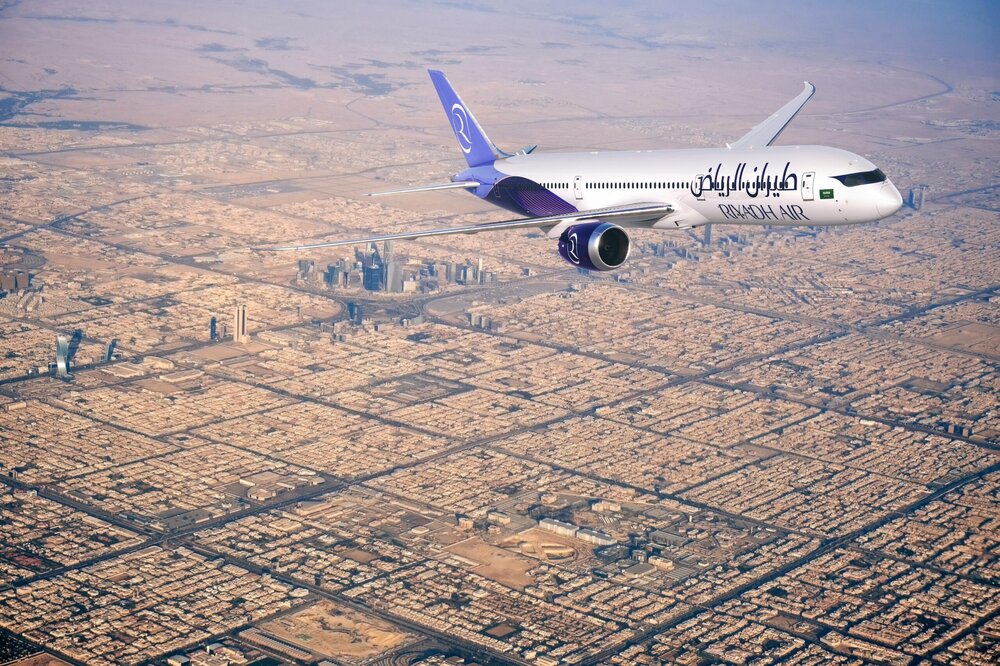Oliver Wyman report says region’s fleet will increase to 2,600 aircraft by 2035
Middle East commercial airlines are expected to grow almost twice as quickly as the global average in the coming years, a new report from consultancy Oliver Wyman reveals.
Outpacing global growth, the Middle East’s share of the global commercial aircraft fleet will increase from 5.3% to 6.7% by 2035, reaching 2,600.
The compound annual growth rate (CAGR) of 5.1% over the next decade is 82% higher than the global expectation of 2.8% according to the Global Fleet and MRO Market Forecast 2025-2035.
Such growth is of little surprise given that Middle Eastern airlines saw a 9.4% traffic rise in 2024 compared to 2023, with demand for travel set to continue in 2025, according to Willie Walsh, IATA’s Director General.
The UAE’s Dubai International airport (DXB) welcomed a record 92.3 million passengers in 2024, marking the busiest-ever year for the airport.
RELATED:
Saudi Arabia's aviation industry flying high in 2025
Middle East airlines report 9.4% year-on-year traffic rise
Emirates rolls out US$5 billion retrofit on services to Seoul and Stansted
“The Middle East commercial aviation market is on a growth trajectory, supported by strong demand for air travel, from both full-service airlines and low-cost carriers entering the market,” said André Martins, Oliver Wyman’s Head of the Transportation, Services, and Operations Practices for India, the Middle East, and Africa.
“The region’s fleet expansion will be driven primarily by the addition of narrow bodies that will cater to the growth in domestic and shorter-haul flights.”
But it is not all smooth flying, with turbulence caused by a disconnect between demand for new aircraft and production, with a record 17,000 unfilled aircraft orders projected through the next 10 years.
That backlog is expected to take 14 years to clear
Dubai-based Emirates has more than 200 aircraft on order from Boeing and recently increased the number of aircraft undergoing retrofits to around 220. Airline president Tim Clark said at ITB Berlin in March 2025 that delays in deliveries left Emirates with “no choice” as it spends US$5 billion on the upgrades.
New airline Riyadh Air is due to launch later this year after delays with aircraft deliveries from Boeing. It has orders for a total of 132 aircraft from Boeing and Airbus, and intends to fly to 100 destinations by 2030.
 Saudi Arabia's Riyadh Air
Saudi Arabia's Riyadh Air
Also in Saudi, in July 2024, Flynas placed an order for 160 new aircraft from Airbus. Qatar Airways has 200 aircraft on order from Boeing and Airbus.
The UAE’s national carrier Etihad has almost 100 aircraft on order which will double its fleet
Oliver Wyman’s report says the Middle East’s aviation market is benefiting from these huge aircraft orders and growing demand for air travel. Saudi and the UAE are leading this growth, representing more than 60% of the market. Domestic flying makes up 45% of seats in Saudi but UAE air travel is all international traffic.
Globally, North America will remain the largest aviation market, but emerging regions like China, India, and the Middle East will capture a larger share.
For more information, visit www.oliverwyman.com/middle-east.html
GET YOUR FREE GUIDE TO THE MALDIVES NOW


_w=940_h=488_pjpg.jpg?v=1c492915)



_w=640_h=335_pjpg.jpg?v=1c492915)
_w=640_h=335_pjpg.jpg?v=1c492915)
_w=640_h=335.png?v=1c492915)
_w=640_h=335_pjpg.jpg?v=1c492915)